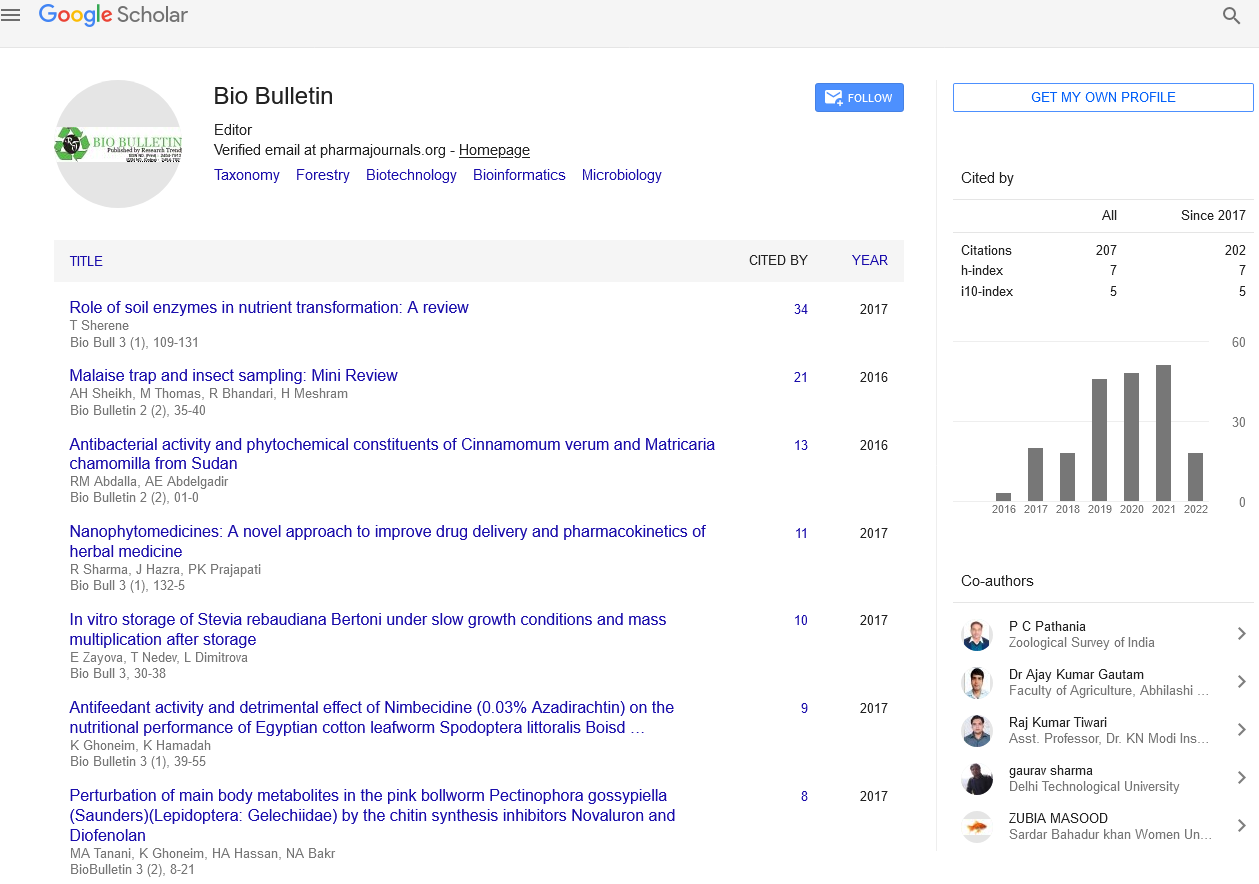Significance of Male Supra-Anal Plate and Cerci in the Classification of Indian Acrididae (Orthoptera: Acridoidea)
Abstract
Author(s): Shahnila Usmani, Mohammad Amir, Mohd Kamil Usmani
A comparative study of male supra-anal plate and cerci was carried out in ninty-eight species of grasshoppers representing fifty-seven genera belonging to the family Acrididae. Its taxonomic significance is described. Male supra-anal plate and cecrci are considered as external part of male genitalia of Acrididae. Taxonomic significance of internal genitalia such as epiphallus and aedeagus was already known for identification and classification in various families and subfamilies of Acridoidea. However the significance of male supra-anal plate and cerci has not been shown. The aim of this study was an attempt to discover their significance for the identification of grasshopper genera and species. In the study, a comparative investigation of male supra-anal and cerci was undertaken in ninty-eight species of grasshoppers representing fifty-seven genera belonging to the family Acrididae. The study revealed that the shape and size of male supra-anal plate and cerci have significant value in separating various genera and species of Acrididae. Shape of male supra-anal plate and cerci is considered as generic character while the shape of apex of supra-anal plate and cerci is suggested to be a specific character of genera i.e. Oxya, Dibolocatantops, Xenocatantops, Anacridium, Heteracris, Eucoptacra, Schistocerca, Choroedocus, Acorypha, Truxalis, Acrida, Phlaeoba, Orthochtha, Aulacobothrus, Acrotylus, Chloebora, Ceracris, Aiolopus, Oedaleus, Heteropternis, Bryodema, Morphacris, Gastrimargus, Sphingonotus Orchilidia and Hieroglyphus.
Haberler
Haberler
Haberler
Haberler
Haberler
Haberler
Haberler
Haberler
Haberler
Haberler
Haberler
Haberler
Haberler
Haberler
Haberler
Haberler
Haberler
Haberler
Haberler
Haberler
Haberler
Haberler
Haberler
Haberler
Haberler
Haberler
Haberler
Haberler
Haberler
Haberler
Haberler
Haberler
Haberler
Haberler
Haberler
Haberler
Haberler
Haberler
Haberler
Haberler
Haberler
Haberler
Haberler
Haberler
Haberler
Haberler
Haberler
Haberler
Haberler
Haberler
Share this article

